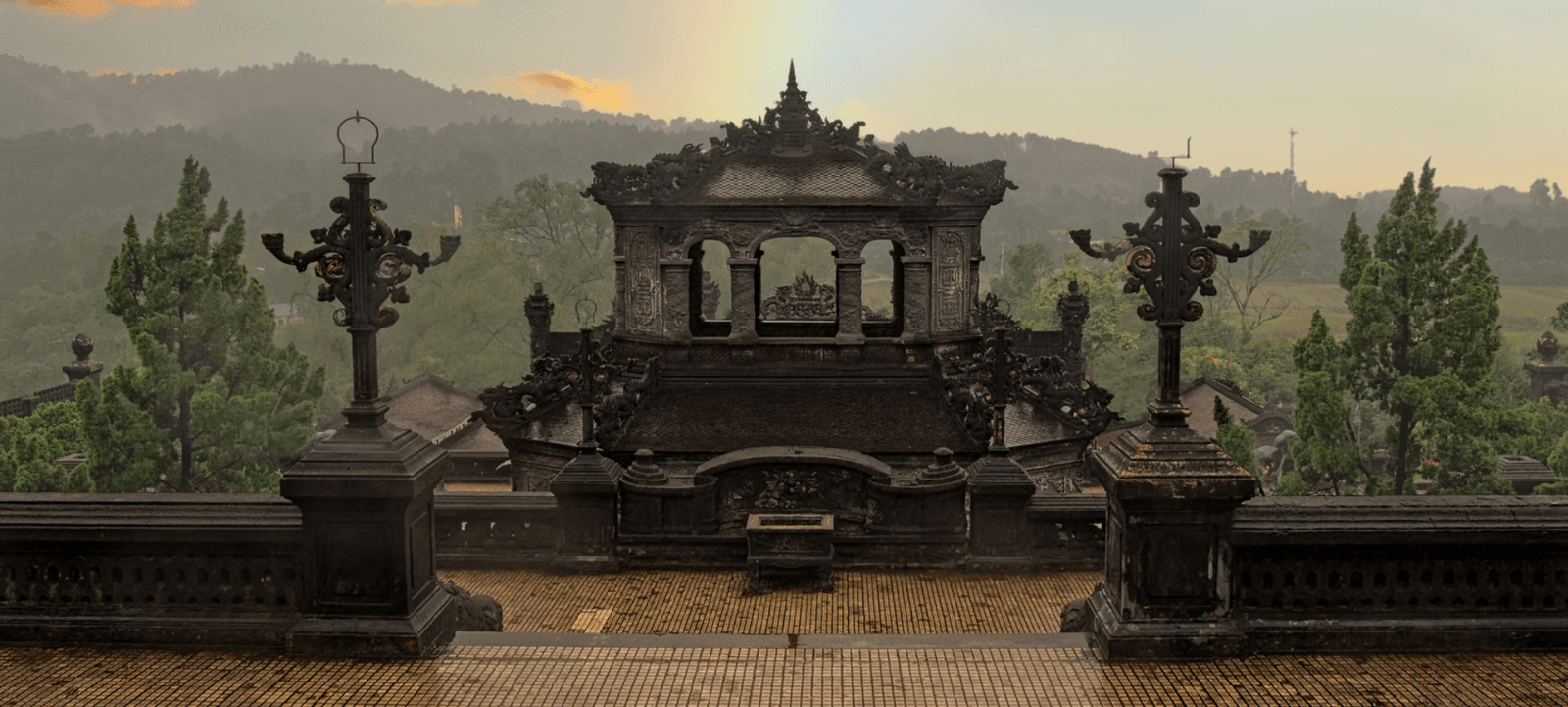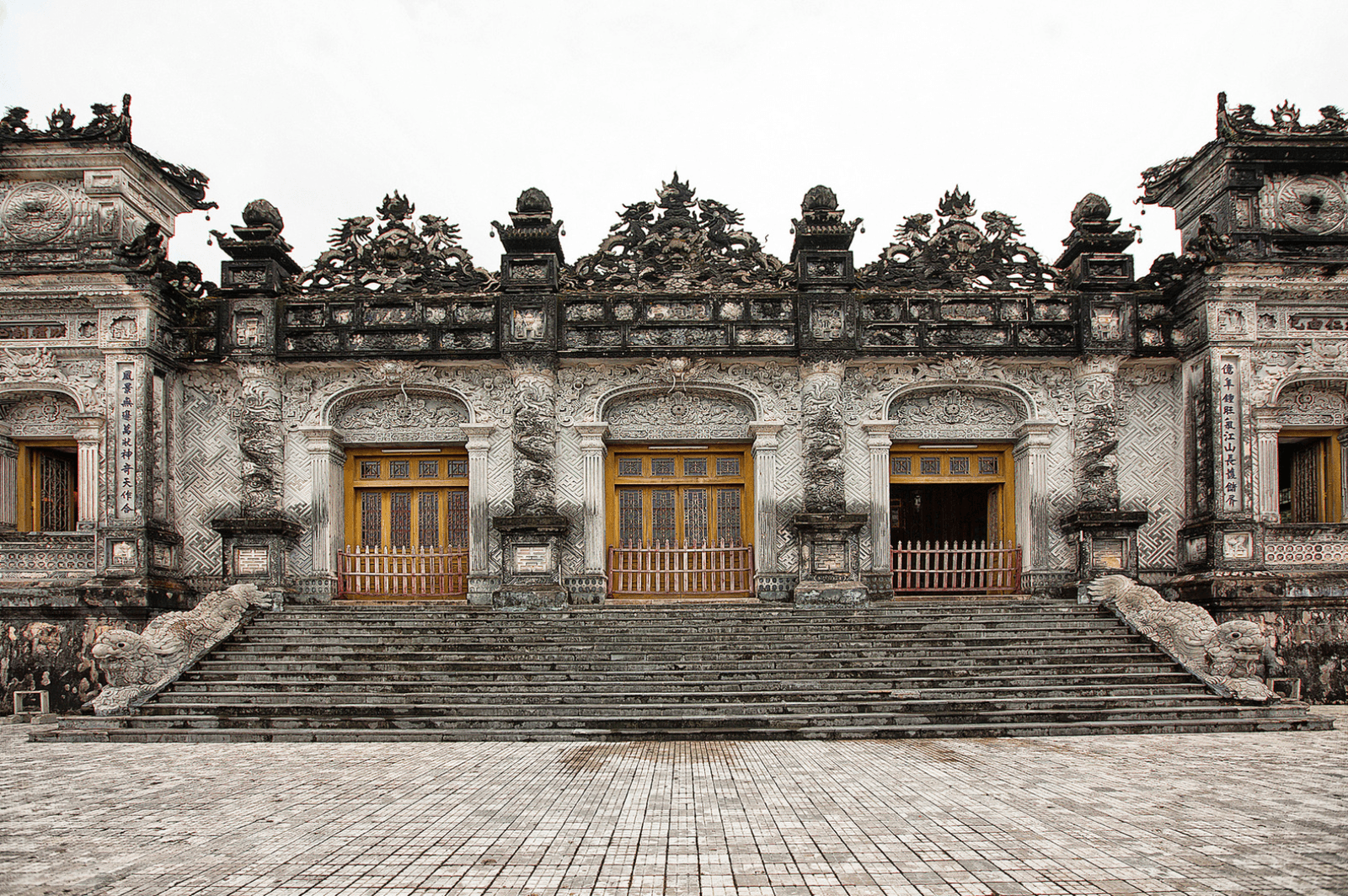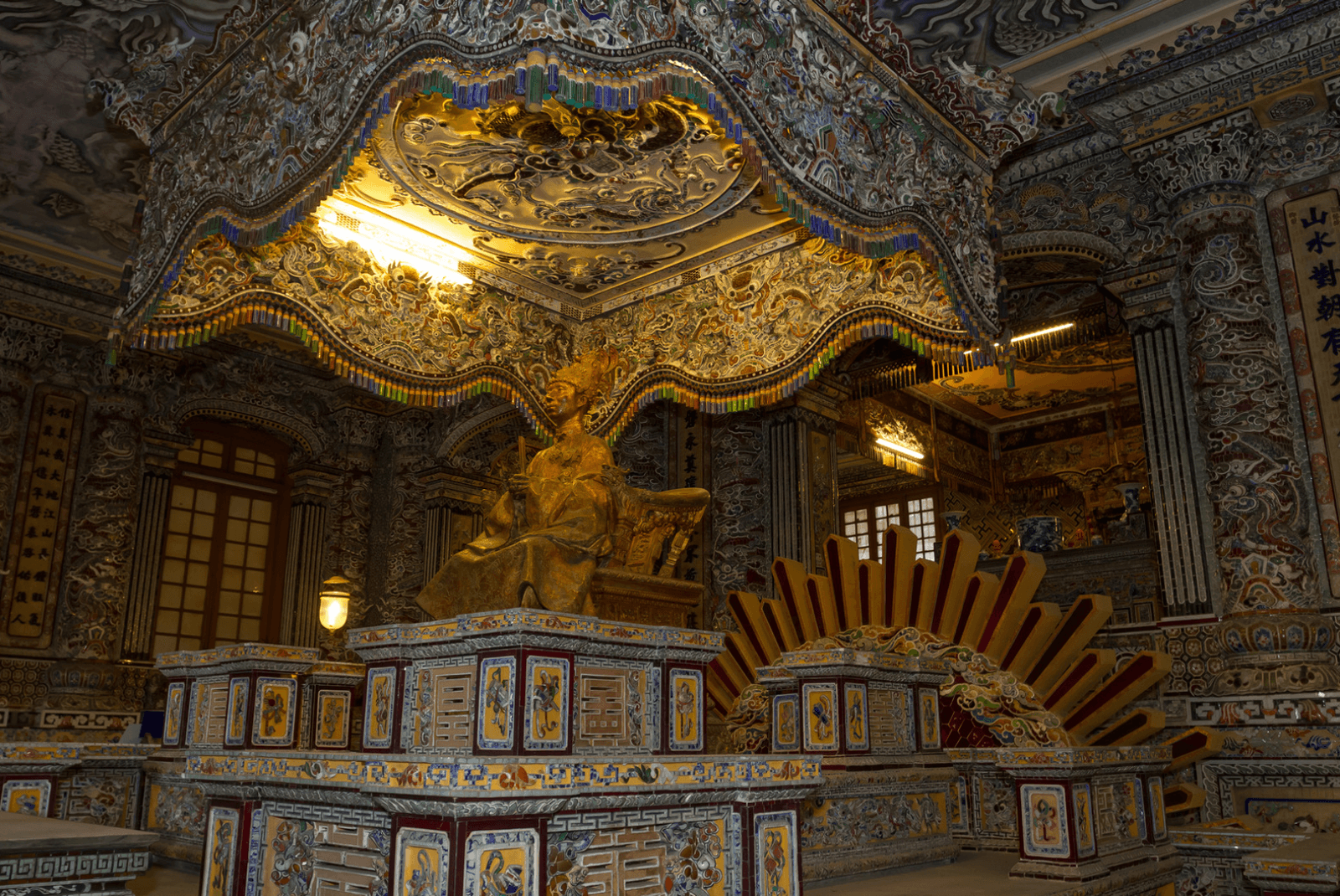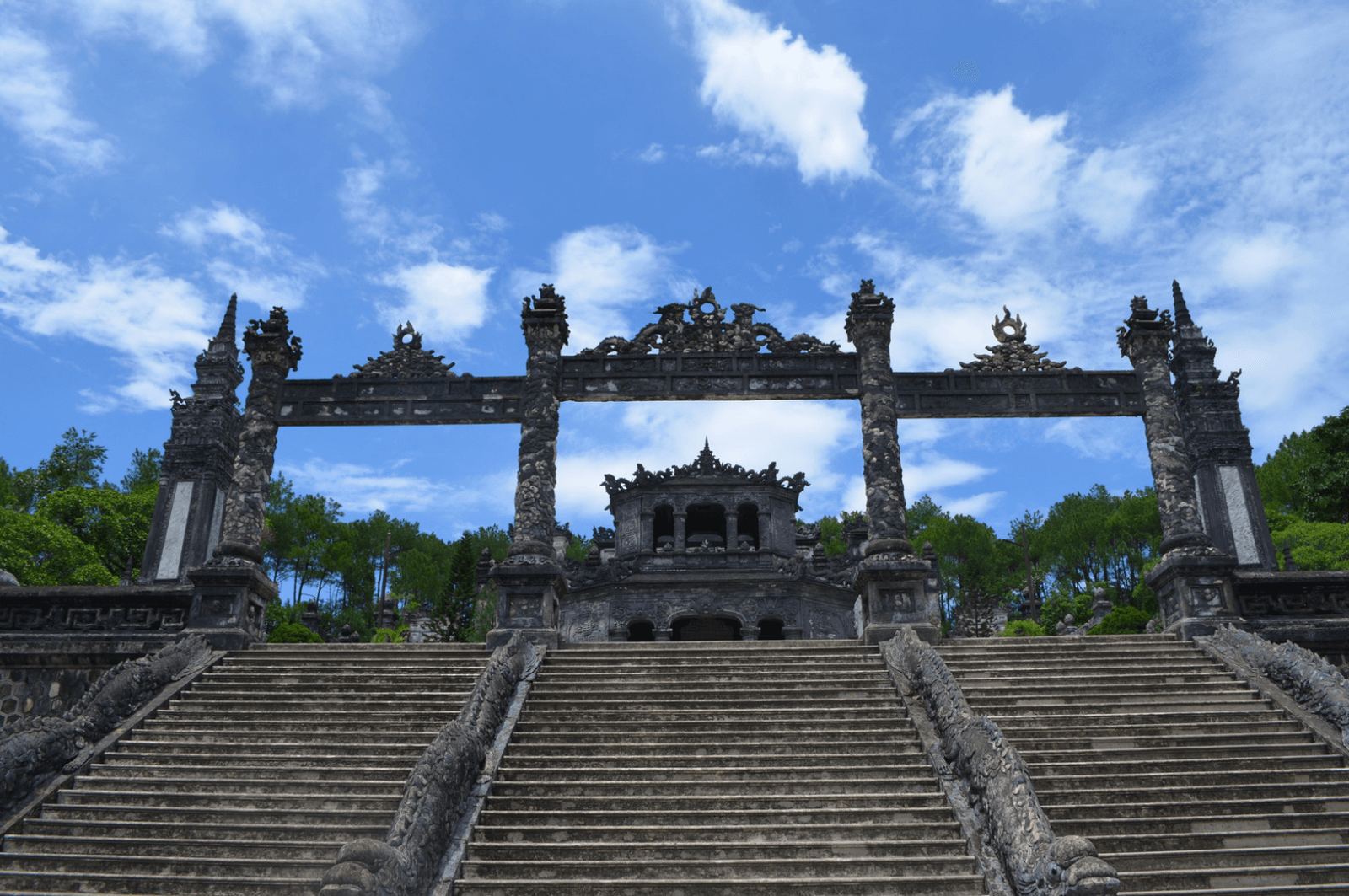The Tomb of Emperor Khải Định is one of the monuments within the Complex of Huế Monuments, which was recognized by UNESCO as a World Cultural Heritage site in 1993. The tomb of Emperor Khải Định (1885–1925) is located on Châu Chữ Mountain in Thủy Bằng Commune, Hương Thủy Town, Thừa Thiên Huế Province. It is considered the most architecturally outstanding tomb and the last construction of the Nguyễn Dynasty (1802–1945).
Feng Shui and Location Selection
Emperor Khải Định chose the tomb’s location based on traditional feng shui principles. The tomb is situated on the slope of Châu Chữ Mountain, with a low hill in front serving as a protective screen. Facing the tomb are Chóp Vung and Kim Sơ Mountains, symbolizing the “Left Azure Dragon” and “Right White Tiger” in feng shui.
The Châu Ê stream flows from left to right, representing the “water convergence” known as “minh đường.” Châu Chữ Mountain serves as both a rear barrier and the tomb’s foundation, which the emperor renamed Ứng Sơn. The tomb was also named after the mountain, becoming Ứng Lăng.

Historical Background of Emperor Khải Định
Khải Định was the 12th emperor of the Nguyễn Dynasty, ascending the throne in 1916 at the age of 31. Soon after his coronation, he initiated and completed various palaces and structures within the Huế Imperial City. He was also the last emperor to construct a tomb for himself.
Construction and Completion of Ứng Lăng
In 1920, at just 35 years old, he began building Ứng Lăng as his final resting place. Five years after construction started, Khải Định passed away. It took another six years after his death—totaling 11 years—to complete the tomb in 1931 under the reign of his son, Emperor Bảo Đại.
Ứng Lăng is more modest in size compared to other Nguyễn Dynasty tombs, covering an area of 117 m × 48.5 m. However, it was meticulously designed and took a significant amount of time and effort to build. Emperor Khải Định imported materials from France, China, and Japan, including iron, steel, roof tiles, porcelain, and stained glass, to construct and decorate the tomb.

Unique Architectural Features
Unlike previous Nguyễn tombs, which emphasized natural harmony, Khải Định’s tomb features a bold fusion of Eastern and Western architectural influences, making it stand out as the most unique royal tomb in Huế.
Main Structures of the Tomb
Nghi Môn Gate and Grand Stairway
The Nghi Môn Gate is intricately decorated with dragon and cloud motifs. To reach the main chamber of the tomb, visitors must ascend 127 steps.
Bi Đình (Stele Pavilion) and Trụ Biểu (Pillar Monuments)
The Bi Đình (Stele Pavilion) is an octagonal structure housing a 3.1-meter-high stone stele, inscribed with the emperor’s accomplishments as written by Emperor Bảo Đại.
To the left and right of the Bi Đình are two Trụ Biểu (pillar monuments), symbolizing candles that illuminate the emperor’s soul in the afterlife.
Realistic Stone Statues
The stone statues in the tomb are sculpted to a 1:1 scale, resembling real people, creating a strikingly lifelike presence.
Thiên Định Palace – The Highest Tier
At the highest level, the 5th tier, lies Thiên Định Palace, the main hall of the tomb.
A stairway with dragon-carved balustrades leads up to Thiên Định Palace, creating a grand entrance to the emperor’s final resting place.
Fusion of Eastern and Western Architectural Styles
The tomb’s architecture reflects a blend of various styles, including Hinduism, Buddhism, Roman, and Gothic influences. The tower-shaped entrance pillars bear the marks of Indian architecture, the stupa-like Trụ Biểu pillars are inspired by Buddhist design, the fence resembles Christian crosses, and the stele house features octagonal columns and modified Roman arches.
This fusion of Eastern and Western cultures is a result of the historical transition period and Emperor Khải Định’s personal tastes.

Intricate Interior Decorations
The interior of Thiên Định Palace is lavishly decorated with intricate mosaic reliefs made from porcelain and glass.
The altar’s decorative patterns, also made from porcelain and glass, include dragon and cloud motifs at the center, surrounded by traditional symbols such as the Four Noble Plants, the Eight Treasures, and the Five Blessings.
Symbolic and Artistic Elements
A gold-plated bronze statue of Emperor Khải Định, sculpted at a 1:1 scale, was cast in France in 1922 and sits on a throne.
The emperor’s tomb ceiling features the Bửu Tán (Imperial Canopy), a finely crafted reinforced concrete structure weighing nearly one ton.
Three large “Nine Dragons Amidst Clouds” paintings—the largest of their kind in Vietnam—adorn the main hall ceiling in Thiên Định Palace.
The burial chamber is intricately decorated with thousands of porcelain, ceramic, and glass pieces, forming dragon and cloud motifs, calligraphic couplets, and highly detailed ornamentation.
The decorative patterns on the columns are assembled from porcelain fragments, arranged in floral and botanical designs.
Every decorative element in the tomb is crafted with extreme care and precision.

Khải Định’s Tomb stands as an artistic and architectural masterpiece, enriching and diversifying the royal tomb complex of Huế.
